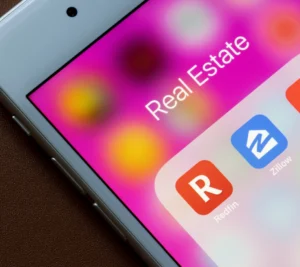6 Underrated Strategies That Actually Work

High-Vacancy Markets
In today’s rental housing landscape, high-vacancy markets can feel like quicksand for property managers and owners. Just when you think you’ve gained solid footing with your marketing strategy, the ground shifts beneath you as new developments open their doors or economic factors change the game.
Recent industry data shows occupancy benchmarks dropping in many markets, with some regions seeing vacancy rates climb past 15%. This isn’t just a statistical concern—every empty unit directly impacts your bottom line, with the average vacant apartment costing owners between $1,750 and $3,500 per month when you factor in lost rent, marketing expenses, and turnover costs.
The conventional playbook—slashing rents, offering free months, or pumping more dollars into the same advertising channels—often delivers diminishing returns in saturated markets.
But there’s good news: innovative property management teams are discovering unconventional lease-up strategies that can significantly outperform traditional methods, even when competing properties are struggling.
These approaches focus less on simply filling units at any cost and more on creating sustainable occupancy through strategic differentiation. The result? Better NOI improvement without sacrificing long-term asset value.
Strategy 1: Hyper-Local Digital Targeting
The days of casting wide nets with generic “apartments for rent” campaigns are behind us. In high-vacancy environments, precision matters more than reach.
From what I’ve observed across multiple markets, successful property managers are implementing geo-targeted marketing that focuses on specific employer hubs within a 5-10 minute commute radius. This approach recognizes that convenience to work remains one of the top three factors in housing decisions, according to recent renter surveys.
The most effective properties have completely revamped their digital strategies. Instead of targeting entire metro areas, they create micro-campaigns focused on the largest employers within two miles. The result isn’t just increased lead volume—it’s a complete transformation in applicant quality.
This hyper-local approach extends beyond just ad targeting. Forward-thinking communities are creating neighborhood-specific landing pages that speak directly to the lifestyle and pain points of nearby residents.
These pages address specific local concerns like commute times to major employment centers, nearby amenities, and neighborhood-specific benefits that generic property websites typically miss.
The key to making this work is leveraging digital leasing platforms that can segment traffic sources and measure conversion rates by campaign. The difference in conversion funnel optimization can be dramatic—properties using hyper-local targeting often see conversion improvements of 30-45% compared to broader approaches.
Action step: Identify your property’s three closest major employers, then create custom landing pages and geo-fenced campaigns speaking directly to the specific needs of those employee populations. Track your leasing performance metrics religiously to refine your approach.
Free Rental Application
Get 20 Rental Forms for FREE, including a rental application.
Strategy 2: Resident Referral Program Innovations
Most properties have some form of referral program, but few have truly innovated in this space. Yet the math makes a compelling case for reinvention: the average tenant acquisition cost through traditional marketing channels ranges from $250-400, while referral-based acquisitions often cost 40-60% less while converting at nearly twice the rate.
The secret lies in creating a referral incentive structure that rewards quality over quantity. Traditional flat-fee referral programs ($500 for any successful referral, for instance) are being replaced by tiered systems that provide escalating rewards for longer lease terms or higher-value units.
This approach aligns with community engagement strategies that treat residents as partners rather than just customers. Leading properties are hosting referral-specific events where current residents can introduce friends to the community in social settings rather than formal tours.
The technology component matters too. Modern rental CRM systems allow for sophisticated tracking, automated follow-ups, and leasing automation that ensures no referral falls through the cracks. The best programs make participation effortless while providing real-time status updates to referring residents.
Action step: Review your current referral program’s success rate, then redesign it with tiered rewards and easier participation mechanisms. Consider implementing digital tracking tools if you haven’t already.
Strategy 3: Strategic Micro-Amenities
The amenity war has left many properties with expensive, underutilized features that fail to meaningfully impact leasing decisions. The next wave of differentiation is coming through strategic micro-amenities—smaller, targeted improvements that create outsized perceived value for specific resident segments.
This approach begins with renter demographic targeting to understand the lifestyle-focused amenities that will resonate with your ideal residents. For communities with high percentages of millennial housing prospects, package delivery solutions and dedicated remote work spaces often deliver better ROI than larger, more capital-intensive amenities.
Generation Z renters, meanwhile, increasingly prioritize experiential spaces over traditional amenities. Properties targeting this demographic are creating Instagram-worthy design moments, collaboration areas, and sustainability features that align with values-driven housing decisions.
After years of observing property competition through big-ticket amenities, I’ve witnessed a successful pivot toward creating small, memorable experiences instead. Properties that convert underused common spaces into themed micro-spaces—like podcast recording booths, Zoom rooms with professional lighting, and gaming nooks—often see their tour-to-application ratio double almost immediately.
The value-add amenities delivering the strongest results tend to address specific pain points rather than general lifestyle enhancements. Dog wash stations, bike repair shops, and enhanced package management systems deliver daily quality-of-life improvements that residents encounter frequently, reinforcing the property’s value proposition.
Increasingly, property standout features incorporate smart apartment technologies and proptech solutions that enhance convenience. From smart thermostats to keyless entry systems, these improvements deliver both operational efficiencies and marketing differentiation.
Action step: Survey your current residents about their most frequent frustrations, then develop 2-3 micro-amenities specifically addressing those pain points. Focus on features that can be mentioned prominently in marketing materials and social media.
Strategy 4: Flexible Lease Structures
While the industry has historically treated the 12-month lease as sacred, forward-thinking operators are discovering that flexible living arrangements can be a powerful differentiator in high-vacancy markets.
Properties struggling with vacancy rates in the 15-20% range have seen immediate improvements after introducing a range of lease term options—from 3 months to 24 months—with appropriate pricing adjustments. This flexibility attracts segments of the market that traditional lease structures simply don’t reach.
This approach particularly appeals to remote worker accommodations, as the rise of location-independent professionals has created demand for housing options that don’t require long-term commitments. Properties that accommodate these mobile professionals often command premium rents for shorter terms while filling units that might otherwise remain vacant.
Some innovative communities are also experimenting with subscription-based amenities as add-ons to standard leases. Rather than building the cost of all amenities into base rent, they offer core living spaces at competitive rates with optional add-ons like premium parking, internet, cable, storage, housekeeping, or remote office access available for monthly fees.
In growing suburban markets like Pflugerville, TX, flexible leasing terms have proven especially effective for attracting renters who value options that accommodate their changing life circumstances. These communities often provide early lease termination options with reasonable notice periods, appealing to professionals who might face relocation or those in transitional life phases.
Strategy 5: Digital Reputation Management Amplification
In competitive markets, your online reputation isn’t just important—it’s often the primary factor determining whether prospects even consider touring your property. Proactive digital reputation management has evolved from damage control to a central rental yield optimization strategy.
Leading properties are implementing comprehensive resident feedback loops that capture sentiment throughout the resident lifecycle. These systems identify tenant pain points before they become negative reviews and create opportunities to showcase responsive management.
The most effective approach I’ve seen involves completely redesigning resident satisfaction metrics. Instead of annual surveys, successful properties implement “pulse check” micro-surveys at key moments—move-in, maintenance requests, renewal offers. This allows them to address small issues before they become deal-breakers and generates authentic positive content to share in marketing materials.
This continuous feedback approach supports brand positioning by generating a steady stream of authentic resident testimonials. The most effective properties segment these testimonials by resident persona, allowing prospective residents to see feedback from others with similar lifestyles and priorities.
Action step: Implement a systematic approach to requesting reviews at positive touchpoints in the resident experience, and develop a response protocol that addresses negative feedback promptly and professionally.
Strategy 6: Cross-Promotional Local Business Partnerships
While location has always been central to real estate value, innovative properties are taking neighborhood integration to new levels through strategic local partnerships that create signature community experiences.
These partnerships extend beyond the standard “preferred business” discounts to create meaningful perceived value creation. For instance, some communities have arranged exclusive resident access to nearby fitness studios, priority reservations at local restaurants, or members-only events with neighborhood retailers.
Properties surrounded by thriving local businesses have found success with “Local Insider” programs, negotiating special experiences for residents with neighborhood partners. These programs often cost relatively little to implement but become powerful unique selling propositions in crowded markets.
The most successful implementations systematically measure the impact of these partnerships through A/B testing leasing strategies. Some communities include different partnership highlights in alternate versions of their marketing materials, tracking which relationships drive the strongest prospect interest.
Action step: Identify 3-5 complementary local businesses near your property and propose mutually beneficial partnerships that provide exclusive benefits to your residents while driving customer traffic to their establishments.
Take the Steps to Align with Your Rental Base
Navigating high-vacancy markets successfully requires moving beyond the conventional playbook to implement strategies that create meaningful differentiation. While rent concessions and increased marketing spend may provide temporary relief, the approaches outlined here offer more sustainable paths to improved occupancy and NOI.
As you consider these approaches, remember that occupancy rate forecasting should account for both immediate gains and long-term stability. Strategies that attract residents through genuine value creation rather than unsustainable discounts will deliver more predictable financial performance.
Ultimately, success in competitive markets just outside of Austin—where move-in specials for apartments in Pflugerville, TX continue to proliferate—stems from deeply understanding the renter’s decision journey and strategically aligning your property’s offerings with their core priorities.
Properties that craft and communicate a compelling value proposition, effectively answering “why choose us?” consistently outperform competitors who rely merely on escalating concessions or generic amenity lists. This value-focused approach creates sustainable occupancy while protecting NOI, even as surrounding communities engage in increasingly aggressive pricing strategies.
Even in the most challenging market saturation conditions, these seven strategies provide a framework for differentiation that can transform occupancy performance. The question isn’t whether these approaches work—it’s which combination will work best for your specific property and resident demographic.
Source: Multifamily Insiders













 Accessibility
Accessibility